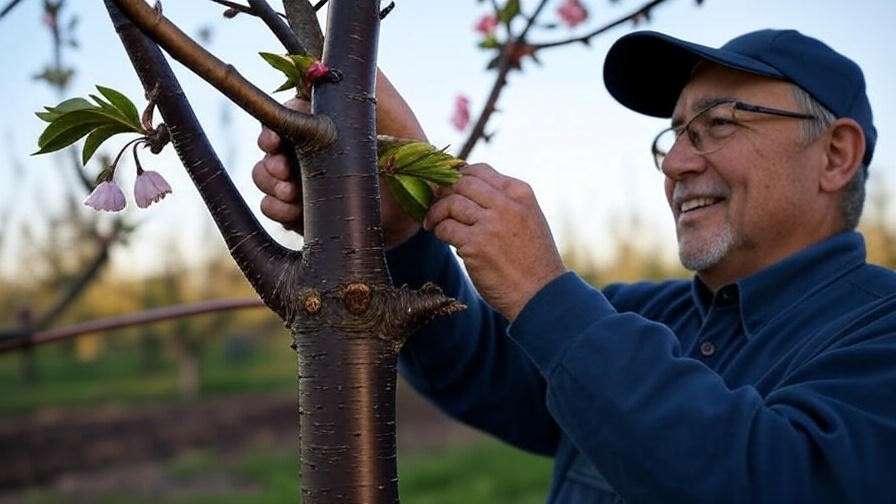Imagine biting into a juicy, homegrown cherry from your own backyard, bursting with flavor and grown on a tree you crafted yourself! Whether you’re a seasoned orchardist or a passionate gardener, cherry tree grafting techniques for better fruit production can transform your cherry harvest. Grafting isn’t just a skill—it’s an art that unlocks higher yields, tastier fruit, and healthier trees. In this comprehensive guide, you’ll discover expert-backed methods, step-by-step instructions, and practical tips to master cherry tree grafting. Backed by decades of horticultural expertise, this article will empower you to grow thriving cherry trees with confidence. Let’s dive in! 🌱
What is Cherry Tree Grafting? 🌳
Definition and Purpose
Cherry tree grafting is the horticultural practice of joining a scion (a cutting from a desired cherry variety) to a rootstock (the root system of another tree). This union creates a single tree that combines the best traits of both parts. The primary purpose? To enhance fruit production, improve disease resistance, and adapt trees to specific growing conditions. According to Dr. Susan Brown, a pomologist at Cornell University, “Grafting allows growers to tailor cherry trees to their unique needs, ensuring optimal performance in diverse environments.”
Why Grafting Matters for Cherry Trees 🍒
Cherry trees face challenges like disease susceptibility (e.g., bacterial canker), inconsistent fruiting, or poor adaptation to certain soils. Grafting solves these by pairing a high-quality fruiting variety with a robust rootstock. For example, grafting a sweet cherry scion like Bing onto a dwarf rootstock like Gisela 5 produces smaller trees ideal for small gardens while boosting early fruit production. This technique also ensures consistent yields, making it a game-changer for both hobbyists and commercial growers.
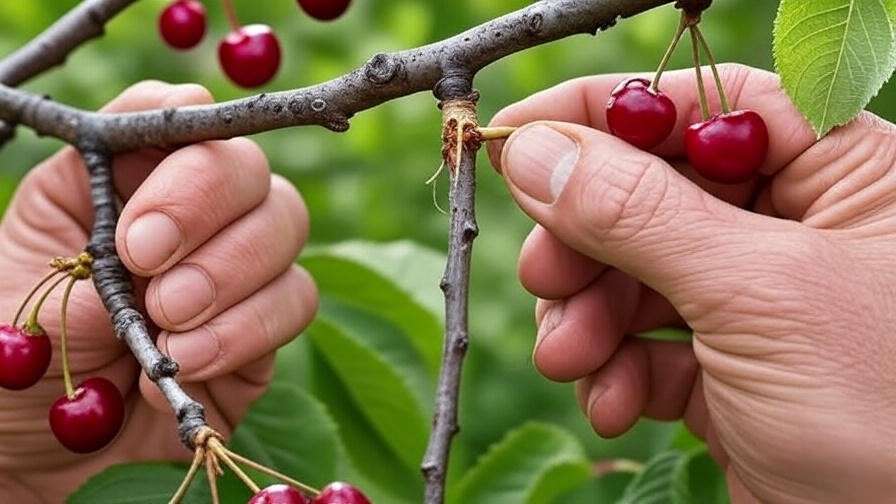
Benefits of Grafting for Cherry Trees 🌟
Enhanced Fruit Production
Grafting directly impacts fruit quality and quantity. By selecting scions from high-yielding varieties, you can achieve larger, sweeter cherries. Dwarf rootstocks, such as Gisela or Krymsk, promote earlier fruiting—sometimes within two years—compared to ungrafted trees, which may take five or more. A 2023 study from Washington State University found that grafted cherry trees yielded up to 30% more fruit than non-grafted counterparts in optimal conditions.
Disease Resistance and Adaptability
Rootstocks like Mazzard or Mahaleb enhance resistance to common cherry diseases, such as Phytophthora root rot or bacterial canker. They also improve adaptability to challenging soils, like clay or sandy loam. For instance, Mazzard rootstocks thrive in heavier soils, while Mahaleb tolerates drier conditions, making grafting a versatile solution for diverse climates.
Customizing Tree Characteristics
Grafting lets you control tree size, growth rate, and fruiting timeline. Dwarf rootstocks create compact trees perfect for small spaces or container gardening, while vigorous rootstocks like Colt suit larger orchards. This customization ensures your cherry trees fit your garden’s needs and maximize productivity.
Types of Cherry Tree Grafting Techniques 🛠️
Whip-and-Tongue Grafting
This popular technique creates a strong, seamless union between scion and rootstock of similar diameters (typically ¼ to ½ inch). It’s ideal for young cherry trees. The process involves making angled cuts on both scion and rootstock, with interlocking “tongues” to ensure a tight fit. Pro Tip: Use a sharp grafting knife for clean cuts to promote faster healing.
Cleft Grafting
Cleft grafting is suited for older trees or larger rootstocks. A vertical split is made in the rootstock, and a wedge-shaped scion is inserted. This method excels for rejuvenating old cherry trees or switching to a new variety. For example, converting an old Montmorency tree to a sweet Rainier variety can extend its productive life.
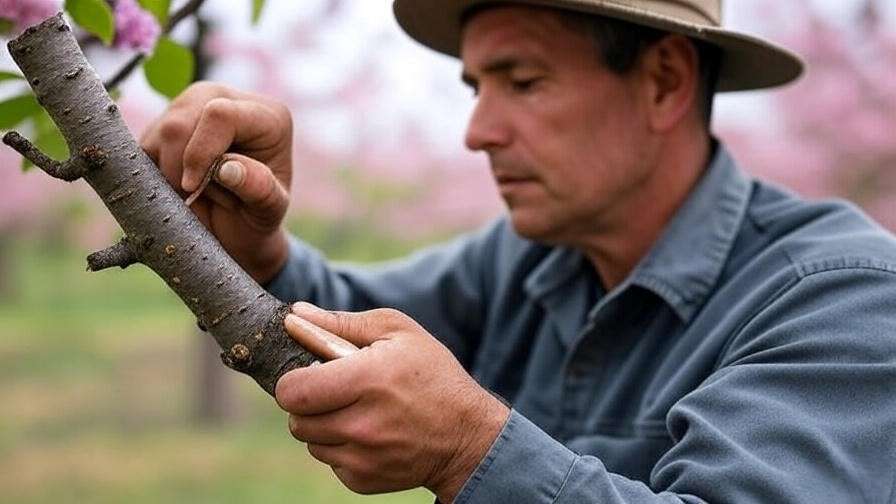
Bud Grafting (Budding)
Bud grafting, or budding, involves inserting a single bud from the scion into the rootstock’s bark. T-budding and chip budding are common for cherries, especially in summer. Late summer (July to August) is ideal, as the bark slips easily, aiding bud integration. Expert Insight: Dr. Greg Lang, a cherry expert at Michigan State University, notes, “Budding in late summer maximizes success rates due to active cambium layers.”
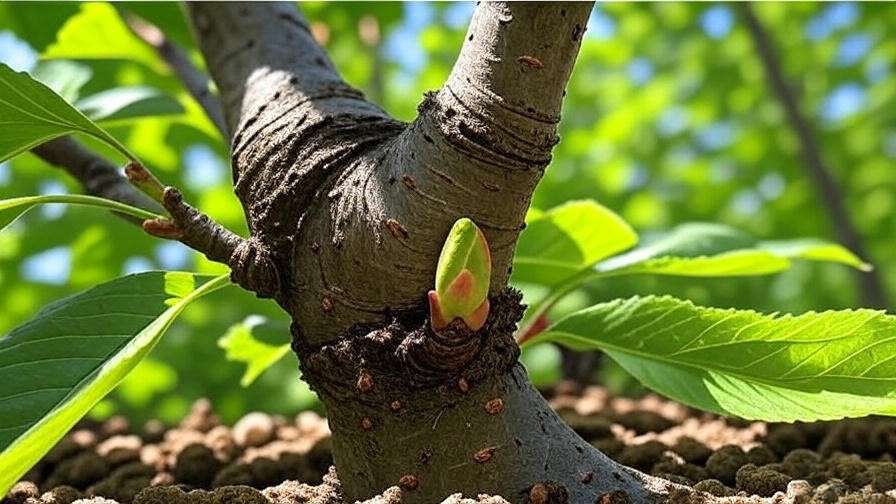
Side-Veneer Grafting
This technique is used for specialty cherries or experimental grafting. A shallow cut is made in the rootstock, and the scion is inserted at an angle. It requires precision to align the cambium layers but is effective for unique varieties. Caution: Misalignment can lead to graft failure, so practice on less valuable trees first.
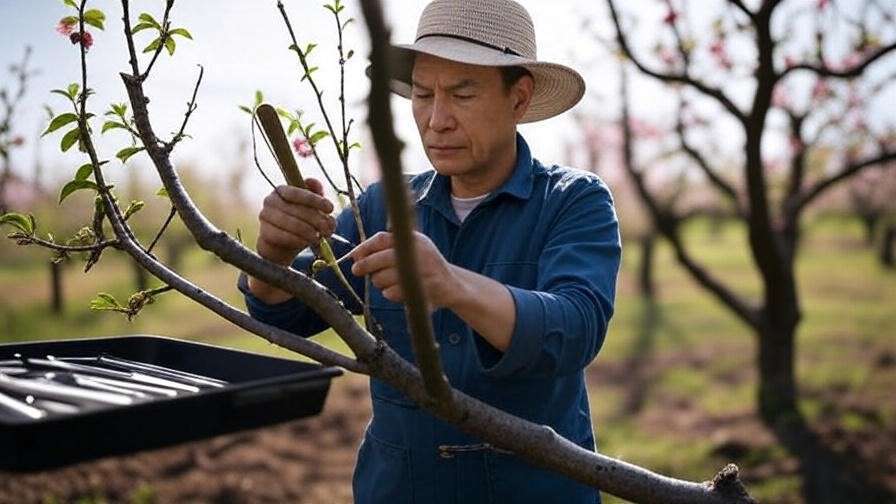
Step-by-Step Guide to Grafting Cherry Trees 📋
Tools and Materials Needed 🧰
To graft successfully, gather these essentials:
- Grafting knife: Sharp and precise for clean cuts.
- Pruning shears: For preparing scion and rootstock.
- Grafting tape or parafilm: To secure the graft union.
- Grafting wax or sealant: To protect against moisture loss and infection.
- Sterilizing solution: Rubbing alcohol or a 10% bleach solution to clean tools.
Tip: Invest in a high-quality grafting knife, like a Victorinox model, for smoother cuts and better results.
Preparing the Scion and Rootstock 🌿
Select a healthy scion from a vigorous, disease-free cherry tree. Choose shoots from the previous season’s growth, about pencil-thick, with 2–3 buds. For rootstocks, opt for compatible varieties like Mazzard for vigor or Gisela 5 for dwarfing. Expert Advice: Ensure scion and rootstock are genetically compatible—check with your local nursery or extension service for recommendations.
Performing the Graft ✂️
Here’s how to perform a whip-and-tongue graft:
- Prepare the rootstock: Make a clean, diagonal cut (about 1–2 inches long) on the rootstock.
- Cut the scion: Match the angle and length of the rootstock cut on the scion.
- Create tongues: Make a secondary cut on both pieces to form interlocking tongues.
- Join the graft: Fit the scion and rootstock together, ensuring cambium layers align.
- Secure the union: Wrap tightly with grafting tape and seal with wax.
Troubleshooting Tip: If the graft shows no growth after 6–8 weeks, check for misalignment or infection and retry with a new scion.
Aftercare for Grafted Cherry Trees 🌞
- Watering: Keep soil consistently moist but not waterlogged.
- Protection: Shield the graft union from sun and pests with a tree wrap or paint.
- Monitoring: Look for new growth within 4–8 weeks as a sign of success. If the scion wilts, it may indicate failure.
Seasonal Tip: Avoid heavy pruning in the first year to reduce stress on the graft.
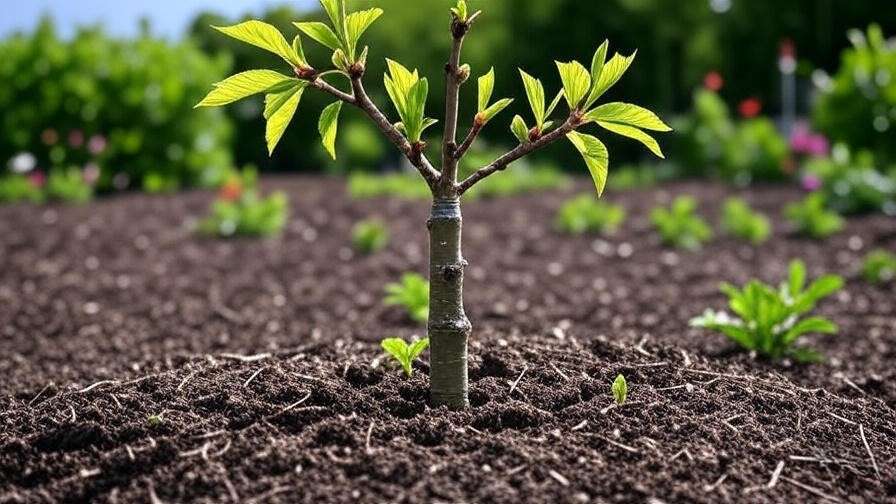
Best Practices for Successful Cherry Tree Grafting ✅
Timing and Seasonality
Timing is critical. Whip-and-tongue and cleft grafting work best in late winter to early spring (February to April in USDA zones 5–8), when trees are dormant but sap is starting to flow. Bud grafting thrives in late summer (July to August). Check your USDA zone for precise timing—local extension services can provide tailored advice.
Choosing Compatible Varieties
Not all cherry varieties pair well with every rootstock. For sweet cherries like Bing or Rainier, Gisela 5 or 6 rootstocks are ideal for dwarfing and early fruiting. For tart cherries like Montmorency, Mahaleb rootstocks offer disease resistance. Below is a compatibility chart:
| Cherry Variety | Recommended Rootstock | Benefits |
| Bing (Sweet) | Gisela 5 | Dwarf, early fruiting |
| Rainier (Sweet) | Krymsk 5 | Vigorous, disease-resistant |
| Montmorency (Tart) | Mahaleb | Drought-tolerant, hardy |
Sterility and Cleanliness
Prevent disease by sterilizing tools between cuts with alcohol wipes or a bleach solution. Pathogens like Pseudomonas (bacterial canker) can ruin grafts if introduced. Expert Tip: Keep a small spray bottle of 70% isopropyl alcohol handy during grafting sessions.
Common Mistakes to Avoid 🚫
- Overcutting: Deep or jagged cuts weaken the graft union. Use sharp tools for precision.
- Poor Cambium Alignment: The cambium (green layer under the bark) must align for the graft to take. Double-check before securing.
- Neglecting Aftercare: Failing to water or protect the graft can lead to drying or infection.
Case Study: A Washington grower lost 60% of grafts due to poor alignment. By retraining on cambium matching and using grafting wax, they achieved a 90% success rate the following season.
Advanced Tips for Maximizing Fruit Production 🍎
Combining Grafting with Pruning
Pruning complements grafting by promoting healthy growth and maximizing fruit production. After a successful graft, selective pruning encourages fruiting spurs—short branches where cherries form. For example, remove weak or crossing branches in late winter to direct energy to the grafted scion. A 2024 study from Oregon State University found that pruned, grafted cherry trees produced 15–20% more fruit than unpruned counterparts. Pro Tip: Use heading cuts on young branches to stimulate spur development, but avoid heavy cuts near the graft union to prevent stress.
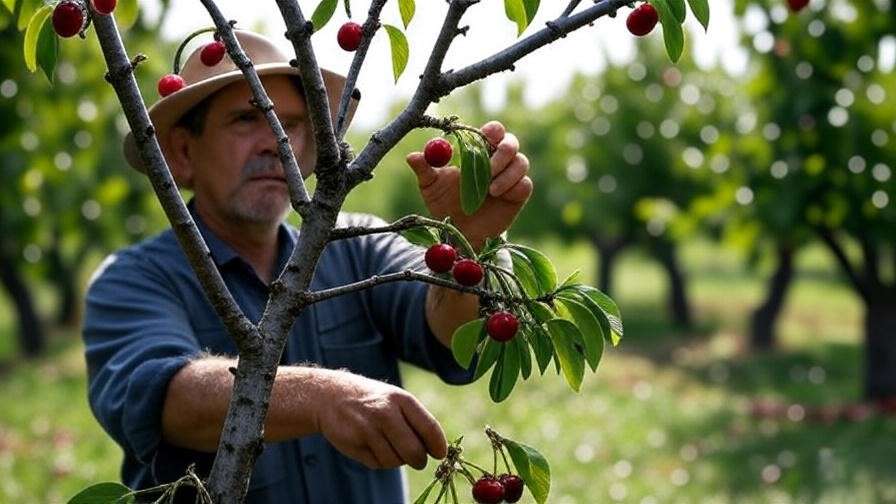
Multi-Variety Grafting
Grafting multiple cherry varieties onto a single tree creates a “fruit cocktail” tree, ideal for small orchards or home gardens. For instance, grafting Bing, Rainier, and Stella onto one rootstock extends the harvest season from early to late summer. This technique saves space and diversifies fruit flavors. Success Story: A California grower grafted three sweet cherry varieties onto a Gisela 6 rootstock, harvesting 50 pounds of mixed cherries from a single tree in its third year. Ensure each scion is compatible with the rootstock to avoid uneven growth.

Soil and Nutrient Management
Healthy soil supports grafted cherry trees for optimal growth. Conduct a soil test before planting to check pH (ideal range: 6.0–6.8) and nutrient levels. Amend with organic matter like compost to improve drainage and fertility. Post-grafting, apply a balanced N-P-K fertilizer (e.g., 10-10-10) in early spring to support new growth. Expert Insight: Dr. Linda Chalker-Scott, a horticulturist at Washington State University, recommends mulching with wood chips to retain moisture and reduce nutrient competition from weeds. Avoid over-fertilizing, as excess nitrogen can weaken grafts.
FAQs About Cherry Tree Grafting ❓
What is the best time to graft cherry trees?
Late winter to early spring (February–April) is ideal for whip-and-tongue or cleft grafting, while late summer (July–August) suits bud grafting. Timing depends on your USDA zone—consult local extension services for precision.
Can I graft different cherry varieties together?
Yes, sweet and tart cherries can be grafted onto compatible rootstocks like Gisela or Mahaleb. Multi-variety grafting is possible but requires careful scion selection to ensure similar vigor and bloom times.
How long does it take for a graft to take?
Successful grafts show new growth within 4–8 weeks. Full integration may take 6–12 months, depending on the technique and aftercare. Monitor for callus formation at the graft union as a sign of success.
What rootstocks are best for cherry trees?
Gisela 5 and 6 are excellent for dwarfing and early fruiting, while Mazzard suits vigorous growth in heavy soils. Mahaleb is ideal for tart cherries in drier conditions. Check compatibility with your cherry variety.
Why did my graft fail, and how can I fix it?
Common causes include poor cambium alignment, infection, or insufficient aftercare. Retry with sterilized tools, precise cuts, and proper sealing. If the rootstock is healthy, attempt a new graft in the next season.
Conclusion: Grow Better Cherries with Grafting! 🌈
Cherry tree grafting is a powerful tool to boost your harvest, improve fruit quality, and create resilient trees tailored to your garden’s needs. By mastering techniques like whip-and-tongue, cleft, or bud grafting, you can transform your orchard into a productive paradise. With the right tools, timing, and aftercare, even novice gardeners can achieve professional results. Start small, practice precision, and watch your cherry trees thrive! Have a grafting success story? Share it in the comments or try these techniques in your orchard today! For more insights, explore resources from university extension programs like those at Michigan State or Cornell University. 🌟

